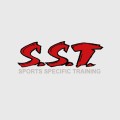With the popularization of high intensity training, Crossfit, and other intense training methods, the idea of training to failure has become increasingly more popular. The idea of working so hard that you cannot possibly complete another rep is seen as an important part of training. However, is this necessary in athletic training when we are after strength and size gains?
Some athletes and coaches may feel that if they are not going 100% every single time, they enter the gym then they are not getting better. Is this necessary? The simple answer is NO. In fact, it is not advisable to train to failure for any extended period of time. The adverse effects of such training far outweigh the potential benefits. The important factor is planning. During the planning process there will be times of higher and lower intensity, as well as higher and lower volumes. All of these factors come together to elicit the types of adaptations in the specific order that will allow for the athlete to improve their specific qualities related to performance.
However, do not confuse training to complete muscular failure with training to technical failure. Technical Failure refers to when an athlete can no longer complete a repetition with proper technique due to fatigue. This is an important concept because technical failure should almost always be utilized in strength and conditioning settings, so as to maximize adaptation and ensure safe training at all times.
So how should we train for size and strength?
What seems to be a determining factor in the types of adaptations that athletes will be receiving during training is volume and intensity. Both of these factors are intimately linked to the types of adaptations we can expect to see from athletes during the training process. Furthermore, to stimulate muscle growth, volume load seems to be the most important factor (sets x reps x intensity). Many papers will show that athletes performing higher volume loads will produce greater hypertrophic responses than those performing lower VL. When size gains are your primary goal, maximizing VL in a systematic fashion seems to be the best approach. Does this mean we need to create muscle damage or train to failure to do so?
Well more recently, a paper by Flann et al. (2011) showed that muscle damage may not be necessary for size, strength and power gains. They had 2 groups of athletes performing exercises, one created lots of muscular damage, and the other group did not. Without getting into the specifics here, what is important is that when equated for volume load, both groups had similar gains in both size and strength of the trained muscles. This suggests that increasing the amount of training is more important than training for failure.
Another important piece of the puzzle is that when preparing athletes for their sport, we are in the business of managing their fatigue. How many of you have woken up from a training session the previous day too sore to train the next day? Well for athletes who are required to perform their sport, this is simply unacceptable. If we are constantly crushing our athletes so that they are unable to perform in their sport, then we are not performing our duties as strength coaches and enhancing their performance. The way around this is planning. Periodization is the process by which we plan out an athlete’s training process so as to maximize their qualities at the times when they are needed and prepare athletes for the rigors of competition. Without this planning process we are simply asking athletes to work hard with no framework as to why they are doing so. As such, this is not doing justice to the importance of their performance.
In a study conducted by Behm et al. (2002) it was shown that completing sets of 20 to failure had a 4x higher time to recover than completing a set of 5 to failure. The relationship holds true between different rep ranges such as 20RM, 10RM, 5RM etc.
This suggests that when training to failure we may be increasing recovery time to the point where we are losing out on additional training.
This increase in fatigue may actually inhibit the athlete’s ability to gain size or strength in the long run because of a constant state of recovery and limited training volumes. Think of it this way, if an athlete has trained so hard as to reach muscular failure, said athlete could lose 2–3 training days due to recovery. Then this athlete has now missed the opportunity to increase their qualities 2–3 times in the long run and had one training sessions where they may have been able to have a total of up to 4. When we add up the total work done in these situations it will almost always favor limiting training to failure so as to increase the amount of training days the athlete can perform.
Failure and Injury
Finally training to failure may also increase the athlete’s likelihood of injury, both of overuse injuries and acute injuries. Willardson (2007) did a review of this topic and found that training to failure may increase the risks associated with overtraining, and overuse injuries. It was recommended that training to failure falls within the context of the overarching periodized plan, and be cycled such as any other training variable (volume, intensity, etc.) Again, this will come back to the periodization (planning) process so as to train the specific qualities at specific times to increase performance.
Summary
Quite simply athletes that are not using pharmacological help will not have the ability to continually recover from training sessions that are pushed to muscular failure. They will be in a constant state of trying to catch up to their recovery and perhaps be pushed into an overtraining syndrome. This can lead to a myriad of negative effects. Athletes’ training loads should be monitored and adjusted accordingly so as to fit within the overarching context of the plan and continually increase the specific qualities needed for championship performances. The volume and intensity relationship when planning the training process is far more important than pushing the body to failure when looking to elicit specific training adaptations. Consider this the next time you are planning for your athletes.
Author:
Dave Scott-McDowell, MExSci, BPHE, CSCS


